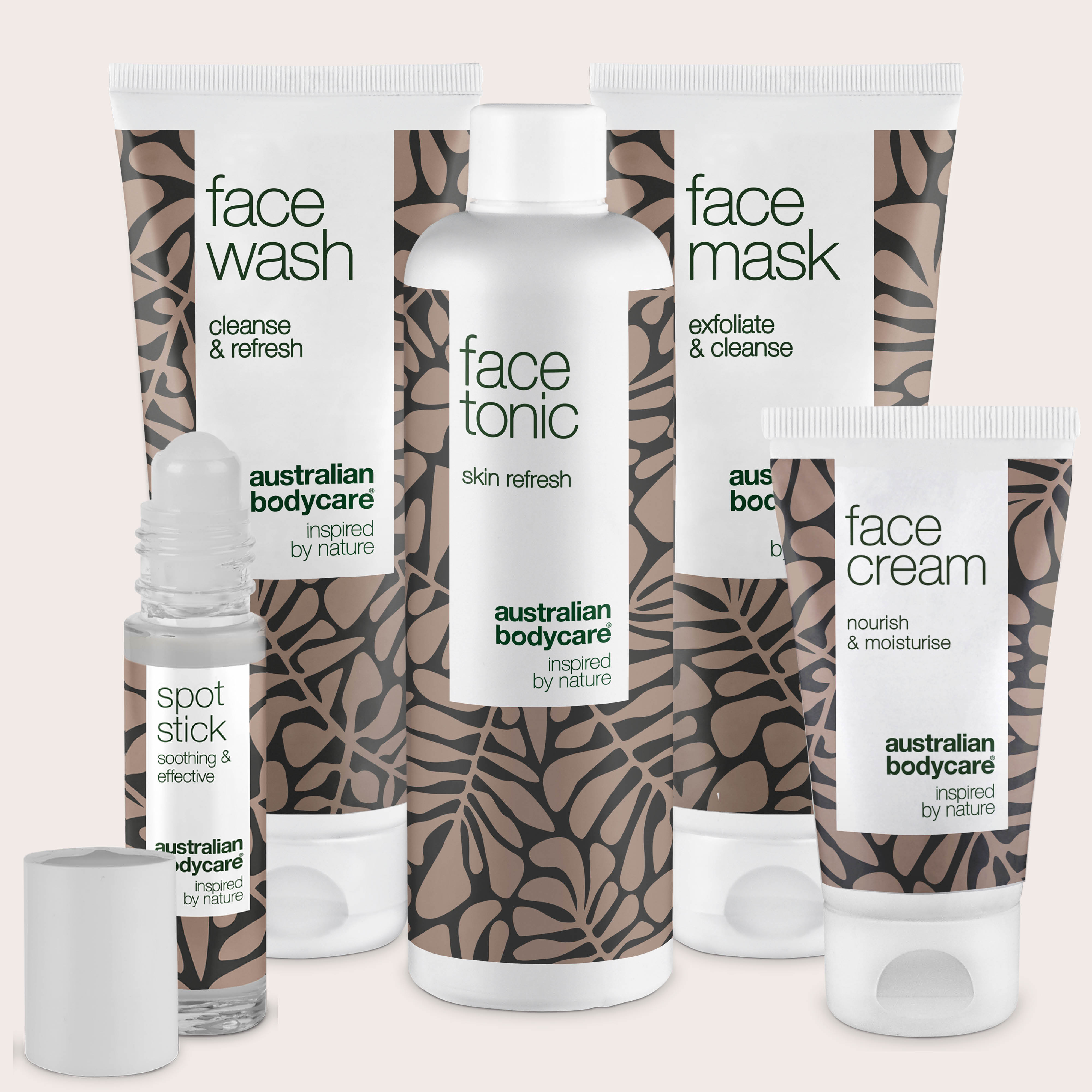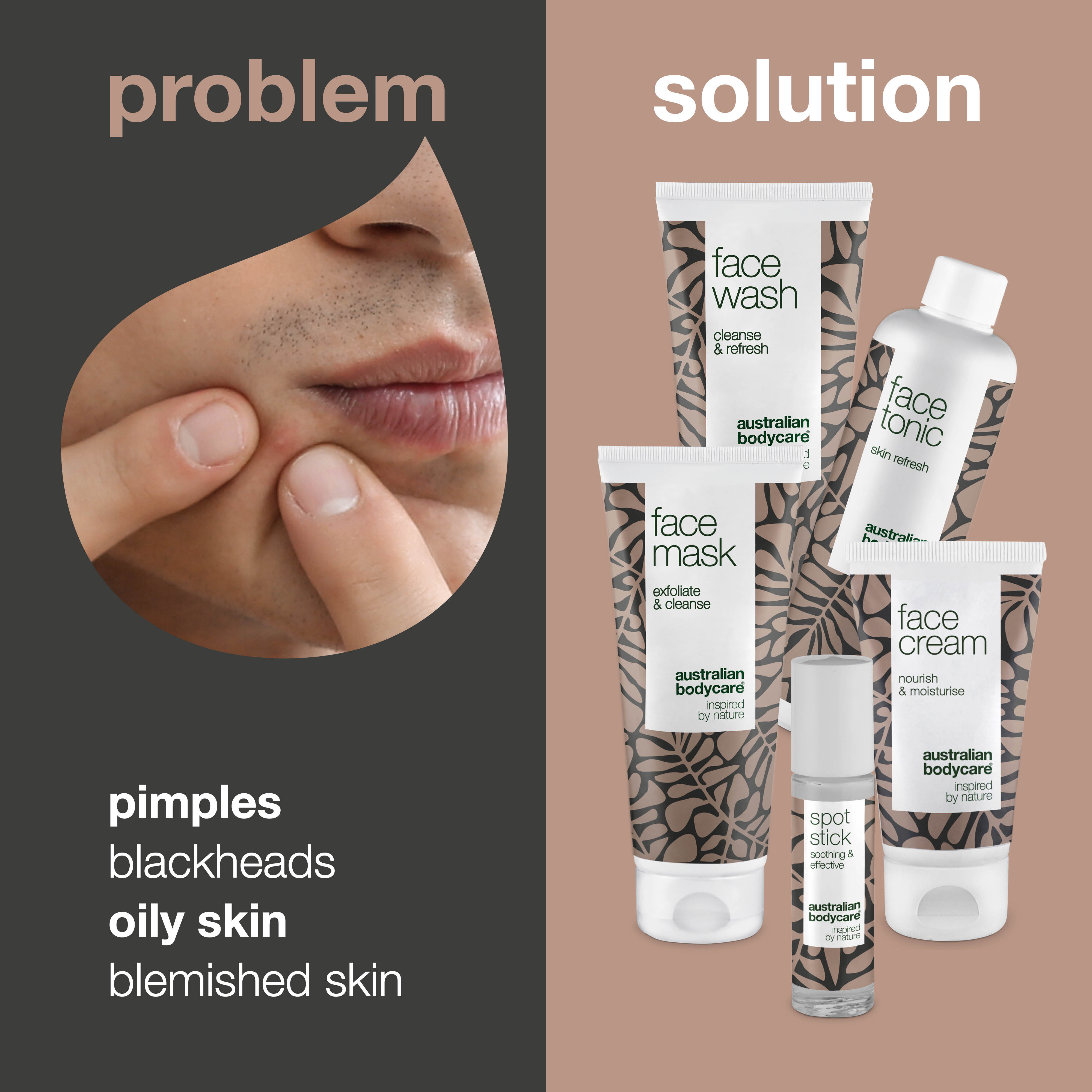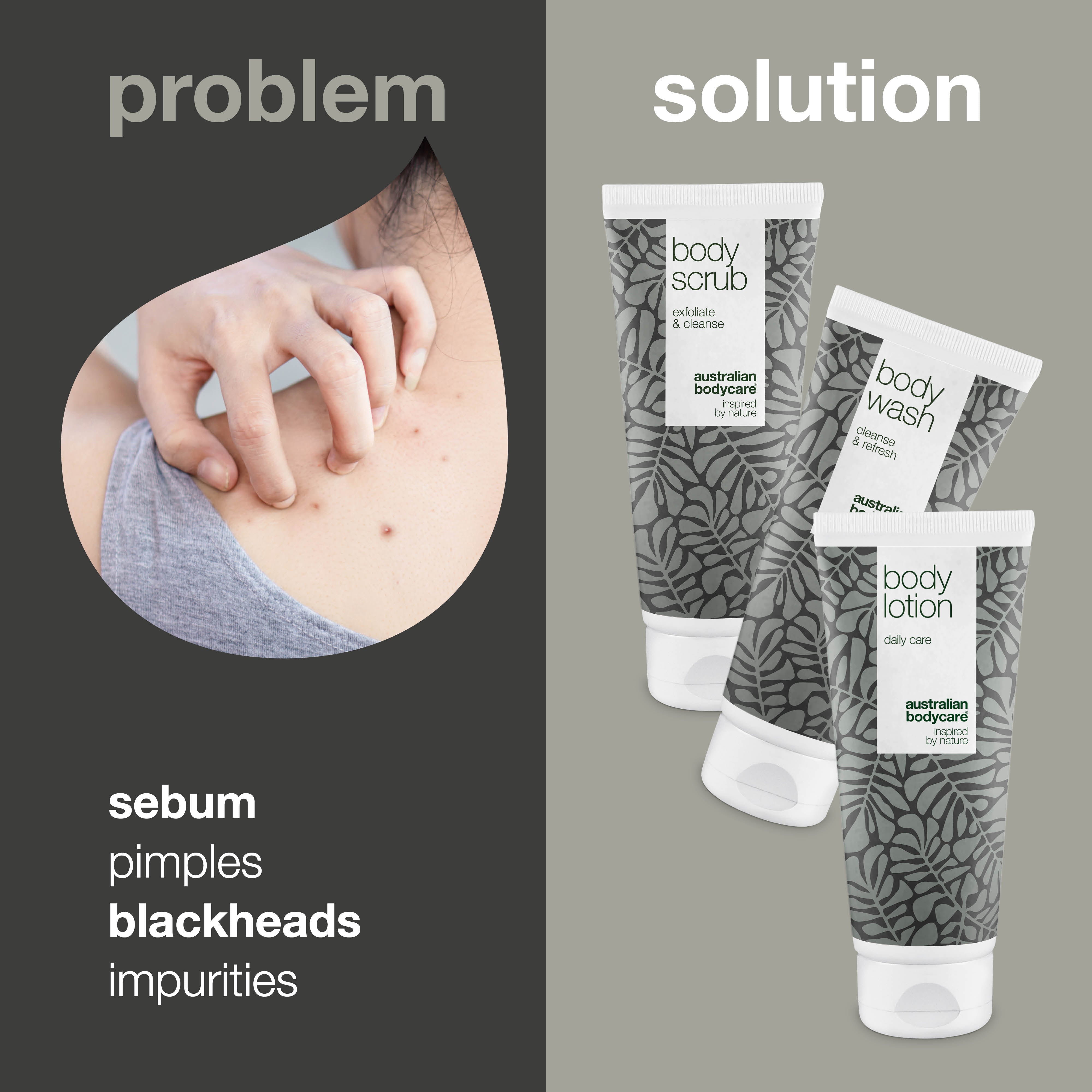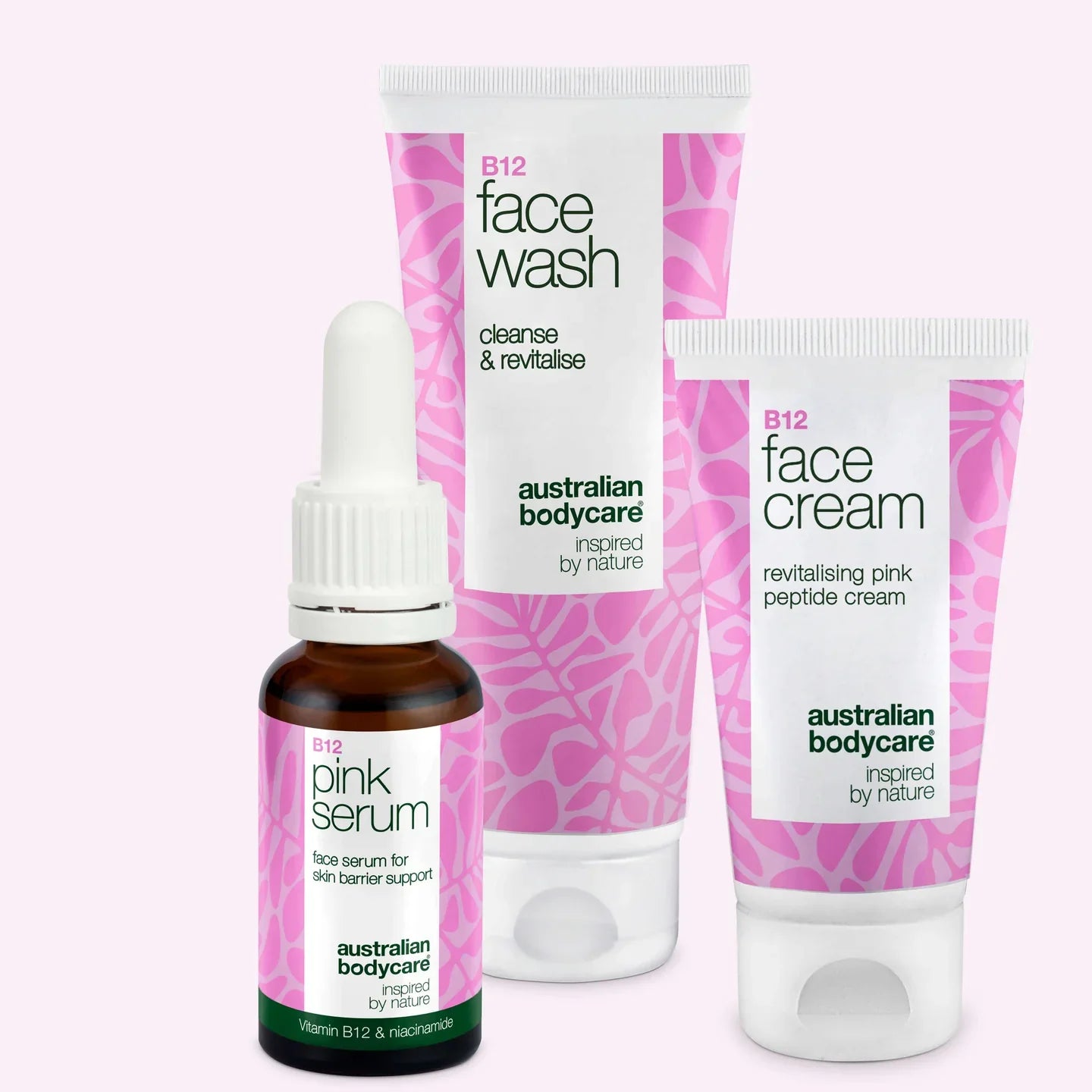Milia – What Are They and How Can You Get Rid of Them?
You might have found yourself staring in the mirror, noticing small white bumps scattered across your body. They're not pimples, and they can't be blackheads since they aren't black—so what are they?
In this guide, we will explore the causes of milia, where they can appear on the body, and safe methods to manage or remove them.
Table of contents
What is Milia?
Milia, also known as mikl spots, are small, white bumps that commonly develop on the skin of people of all ages. They typically occur in areas of the body where we have denser hair growth but do not appear on palms or soles
Each milium is a small cyst filled with a protein called keratin, which is naturally found in the skin, hair, and nails. These cysts are typically about 1-2 millimeters in diameter and can appear as single bumps or in clusters. Because of that, milia can easily be mistaken for tiny pimples or hair follicles. But unlike pimples, milia are not caused by clogged pores and they do not usually cause inflammation or pain. In reality, they are small sebaceous glands secreting an oil so rich that it turns into sebum.
Sebum is water-repellent and protects the skin from losing moisture, as well as safeguarding hair and skin from drying out.
Milia are most commonly found on the face, particularly around the eyes, cheeks, and nose, but they can also appear on other parts of the body.
Milia are categorized into two main types:
1. Primary Milia: These occur spontaneously, commonly on the faces of infants and adults, and form directly from sloughed-off skin that gets trapped in small pockets at the surface of the skin.
2. Secondary Milia: These develop as a result of skin damage—be it from burns, blisters, or excessive sun exposure—which disrupts the skin’s natural exfoliation process.
While milia may resemble whiteheads, they are entirely different in nature and require different treatment approaches. Understanding these nuances is crucial for effective management and highlights the importance of tailored skincare routines.
Go directly to: How to Get Rid of Milia
What Causes Milia?
Milia are typically formed when keratin, a natural protein in the skin, becomes trapped beneath the outer layer of the skin, forming a tiny cyst. Several factors can contribute to the formation of milia, and understanding these can help in both prevention and treatment.
Common causes of milia include:
1. Skin residue build-up: In many cases, milia form when dead skin cells do not shed properly and clog the pores, leading to small cysts. This is particularly prevalent in skin that lacks exfoliation or in skin types that are naturally more prone to retaining dead skin cells.
2. Sun Damage: Long-term sun exposure can damage the skin, thickening the outer layer and making it more difficult for dead skin cells to shed normally. This can trap keratin beneath the skin’s surface.
3. Heavy use of skincare or cosmetic products: Thick creams and oils that are not suitable for one's skin type can clog the skin’s surface, trapping keratin and dead skin cells.
4. Damaged skin: Any form of skin injury, such as burns, blisters, or abrasions, can lead to the formation of milia as the skin heals. The disruption caused by the injury can trap keratin under the skin.
5. Genetic factors: Some people are genetically predisposed to milia, indicating that family history might play a role in their development.
6. Newborn skin immaturity: In newborns, milia are exceedingly common due to their developing skin, which naturally clears up on its own.
Understanding these causes helps in identifying the best preventative and treatment strategies, such as choosing the right skincare products, protecting the skin from excessive sun exposure, and maintaining proper exfoliation routines.
Where Can Milia Appear?
Milia can occur in various parts of the body, each with specific concerns due to the area's sensitivity or exposure. Here's a detailed breakdown of common locations for milia and considerations for each:
Milia on Face
Facial milia are highly visible and often a primary cosmetic concern for many people.
- Milia under Eyelids: Milia under the eyes can be seen in combination with bags under the eyes. The combination of these two problems can be aesthetically unattractive and even be a cause of low self-esteem, especially during teenage years.
- Milia on Chin: Just as with milia under the eyes, many also have milia on their cheeks. Here, they arise for the same reason as under the eyes: pores on the skin that are clogged by excess sebum just below the outermost layer of the skin.
- Milia on Forehead: Milia aren't as common on the forehead as they are in other body areas where hair grows thicker. Usually, milia on the forehead don't cause much trouble since the hair there is pretty sparse. It can appear as a result from excessive sweating or use of pore-clogging hair products.
Milia on Body
Milia on the body are less common but can occur due to various factors like clothing friction or skin care products.
- Milia on Arms: These can appear due to tight clothing or poor exfoliation practices, trapping keratin under the skin.
- Milia on Legs: If you have bumps on the legs, they could either be milia or small red bumps called keratosis pilaris. The latter are not milia, but they occur in roughly the same way, i.e., the openings of the hair follicles get clogged because the body produces an excess of keratin.
- Milia on Neck: The skin on the neck is delicate and can develop milia due to perfumed lotions or sunscreens that clog the skin.
Milia on Scalp
There are many different types of small bumps one can have on the scalp. If it's small milia, try not to go overboard with treatments; just let them be, as they play a significant role in the hair's health and well-being. If you find yourself with itchy bumps, it could be due to other reasons, like dandruff, eczema, lice, or a combination of these with sebaceous cysts. In such cases, it's best to consult a doctor who can decide if you need treatment or not.
Sebaceous cysts in the scalp are usually harmless and non-contagious. You should carefully consider whether treatment is necessary before diving into it. If you find small sebaceous cysts, which are really just small milia, know that they are there to keep the hair roots, and thereby the entire hair, in good condition. They also protect the hair and skin from bacteria, so they should only be removed from the scalp if absolutely necessary.
How to Get Rid of Milia
Managing and removing milia involves a combination of proper skincare practices and, in some cases, professional treatments. Here’s a detailed guide on how to safely address milia across different areas of the body, using both at-home care and professional options.
How to Get Rid of Milia on Face
Facial milia require gentle but effective methods due to the sensitivity of facial skin:
- Regular Cleansing and Exfoliation: Use a gentle cleanser, morning and evening, to help remove dead skin cells and prevent keratin from becoming trapped. Australian Bodycare’s Face Wash is excellent for cleansing without stripping the skin’s natural oils. It efficiently removes bacteria, dirt, and any makeup residues that could contribute to milia formation.
- Cleanse pores deeply: After face cleansing, apply Face Tonic using a cotton pad and gently stroke over the clean face and neck. The tonic penetrates the pores and prevents bacteria from settling in the pores and turning into blemishes and milia.
- Moisturising is key: After cleansing, apply a light moisturiser to keep skin hydrated. Even if you have oily skin, it’s important that you don’t skip the moisturiser. If you rob your skin of moisture, it will over-compensate by producing more sebum, which can clog your pores and cause more milia.
- Using of face Masks: Once or twice a week, you can use a face mask before cleansing. the face mask deeply cleanse and exfoliate your skin to remove dead skin cells and toxins that have clogged the openings of the sebaceous glands. This effective treatment reopens the pores so that sebum can rise to the surface and disappear, while also removing all blackheads.
- BHA Peeling: BHAs, such as salicylic acid, are oil-soluble, allowing them to penetrate deeper into the pores to remove dead skin cells and excess sebum. This makes BHAs perfect for oily skin and areas prone to milia like the T-zone. Our T-zone peeling with 2% BHA salicylic acid is particularly effective at preventing the formation of milia because it exfoliates inside the pore and on the surface of the skin, leaving the skin smooth and clean.
How to Get Rid of Milia on Body
It's perfectly normal to have milia pop up all over the body except for the palms and soles, where there is no hair growth. Milia can also be found in high concentrations on the genitals – which is totally normal and necessary for the skin there to retain moisture and stay soft and smooth.
So, you shouldn't worry if you notice small bumps in these areas since all humans have them, and they're part of our basic bodily functions. If you find milia on your body embarrassing, you might try removing or reducing them, but milia in the scalp and on the genitals should not be removed, as sebum plays a crucial role in keeping the skin healthy here. The glands produce sebum, which is necessary to protect the skin against unwanted bacteria and foreign microorganisms.
If you want to get rid of them for aesthetic reasons or if they affect you psychologically (like affecting your self-esteem), there are some methods you can try:
- Proper Body Hygiene: Shower regularly, especially after sweating, to keep the pores clear. Here you can use our effective and gentle body wash that washes away dirt and excess sebum from the skin.
- Exfoliating Body Washes: Use a body scrub or an exfoliating wash once or twice a week to help prevent dead skin buildup. The gentle scrub grains effectively remove dead skin cells, leaving the skin soft and smooth.
- Lightweight Moisturizers: Choose body lotions that absorb quickly and do not leave a residue that could clog pores. It is important to moisturize your skin every day – even if you suffer from clog pores or skin blemishes.
Professional Milia Treatment
For persistent milia or those in sensitive or difficult-to-treat areas, professional treatment might be necessary:
- De-roofing: Is the most common and effective treatment. A dermatologist uses a sterile needle to gently remove the cyst’s contents. This procedure should only be performed by a professional to prevent scarring.
- Cryotherapy: Freezing the milia with liquid nitrogen can help remove them, though this method is less commonly used due to the risk of skin discoloration.
- Chemical Peels: Professional chemical peels can help resurface the skin and reduce the appearance of milia by removing the upper layers of the skin where the milia are located.
It is crucial not to attempt to remove milia by squeezing or picking at them, as this can lead to scarring and infection. If home remedies do not clear up milia or if they are bothersome, it is best to seek advice from a skincare professional or a dermatologist.
FAQ
Can milia go away on their own?
Yes, milia can resolve on their own without intervention, especially in newborns and young children. However, in adults, while some milia may disappear over time, others might persist and require treatment to be removed effectively.
Are milia caused by poor hygiene?
No, milia are not caused by poor hygiene. They are cysts that form when keratin becomes trapped beneath the skin's surface and are not a result of dirt or unclean skin.
Can you squeeze milia?
It is not recommended to squeeze milia. Unlike acne, milia are hard cysts under the skin without an opening to the surface, making them difficult to pop. Attempting to do so can lead to infection, scarring, or further skin irritation. it is best to seek advice from a skincare professional or a dermatologist, if you wish to remove your milia.
What skincare products should I avoid if I have milia?
If you are prone to milia, you should avoid heavy, comedogenic creams and make-up that can clog your pores. opt for lightweight, non-comedogenic products, and consider incorporating a gentle exfoliator into your routine to help prevent skin cell buildup.
How can I prevent milia from forming?
To prevent milia, maintain a regular skincare routine that includes gentle cleansing and exfoliation. Protect your skin from excessive sun exposure by using sunscreen, and avoid using heavy skincare products that can clog pores.
When should I see a dermatologist for milia?
You should consult a dermatologist if milia are persistent, if you have concerns about your skin appearance, or if the milia become irritated or start to cause discomfort. A dermatologist can provide professional treatments and tailored advice for managing milia.







